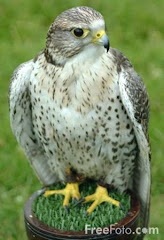
- Introduction of world and Afghanistan cranes.
- Introduction of cranes habitat and migration corridors in Afghanistan.
- Comparing the status of cranes conservation in other countries and the strategy of birds’ protection in Afghanistan and the mandate of those organizations that dedicated to birds and cranes conservation.
- A presentation public awareness program that has been conducted in Afghanistan especially in the corridor of migratory species.
- Why conserve wildlife?
- How can conserve the wildlife in the country?
- How can stop hunting?
- Where to stop treats to wildlife?
- When it should happen?
- How can implement our objective in the areas?
- How can go a head with the future programs?
- Who can be volunteer to join the efforts?


Feedback of the participants:
· Wildlife is part of nature and we should not damage the nature because it’s the food chain and we live in it.
· God created the wildlife and ordered us to use and protect and this is our responsibility to conserve God creatures.
· Disappearing of wildlife in nature means end of our life and we all live in nature and benefit of the food chain.
· Lack of public awareness is the main threat and we must increase public awareness.
· The continuation of Education programs through different channels including visual Medias, informative and education materials to those has access to it.
· Organize conservation seminars for government authorities.
· Develop and finalize hunting laws
· Alternative programs that can support communities and reduce the pressure
· Work with local people to prevent hunting and we must bring different examples from other countries where is not hunting and the values of wildlife in those countries.
Commitment of participant in return
All participants committed to transfer the messages to the areas where they live and to work on the issues that they interacted during the two days seminar. Most of the participants showed their interest to join us and help us when we conduct the survey and conservation education programs in their villages.
Education materials
Various informative materials that have been developed by SEA, ICF and WCS were distributed to the participants and other local people in the area. At the meantime, we would like to extend our thanks to WCS and Kara Steven for her efforts in providing posters and wildlife broachers for the seminar. We are committed to continue the efforts and conserve the area for a safe migration.
Qais Agah
Environmental education technical advisor
Wildlife conservationist



 Cranes wintering area
Cranes wintering area Thousands of species have been dead because of harsh cold weather
Thousands of species have been dead because of harsh cold weather
















